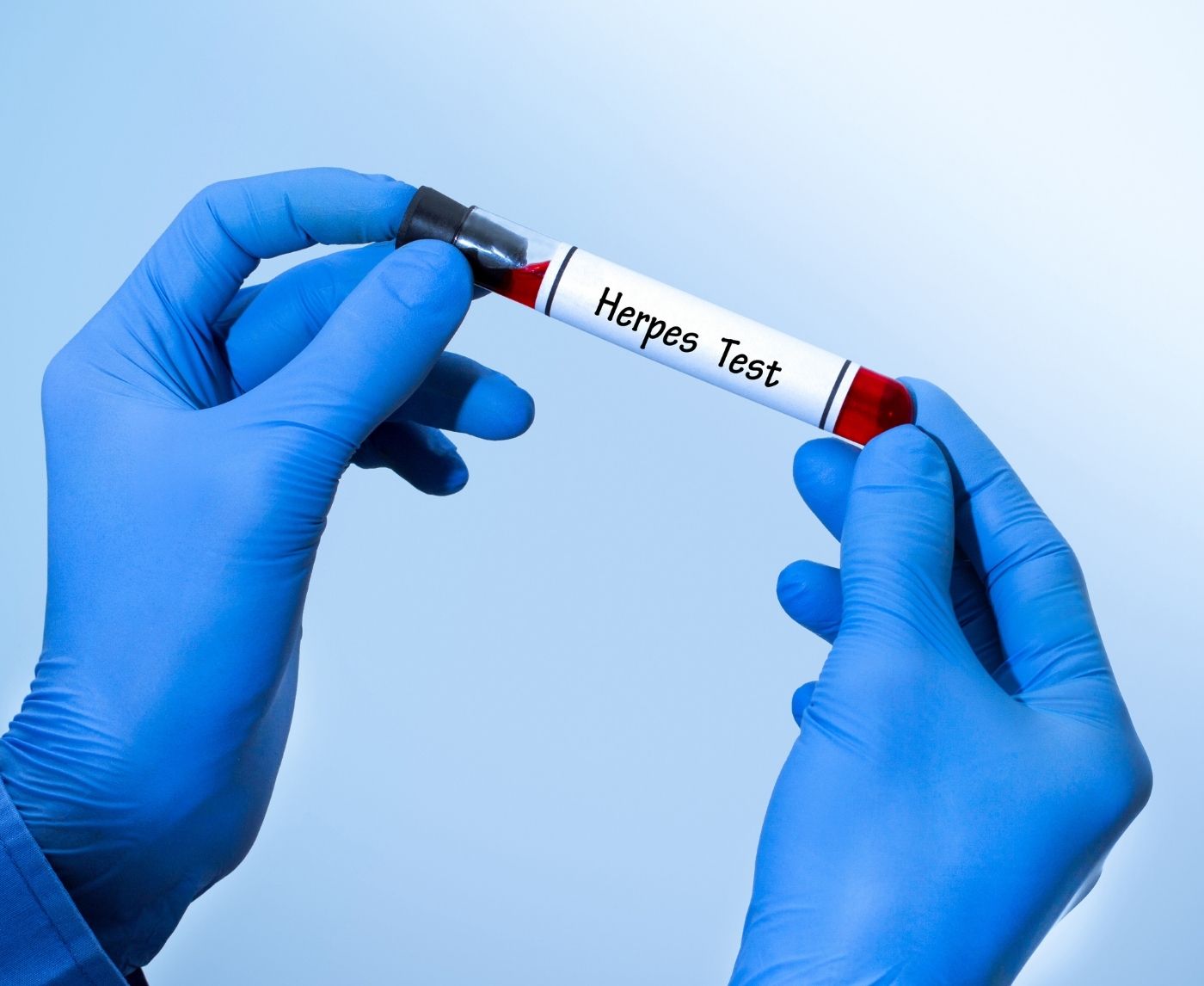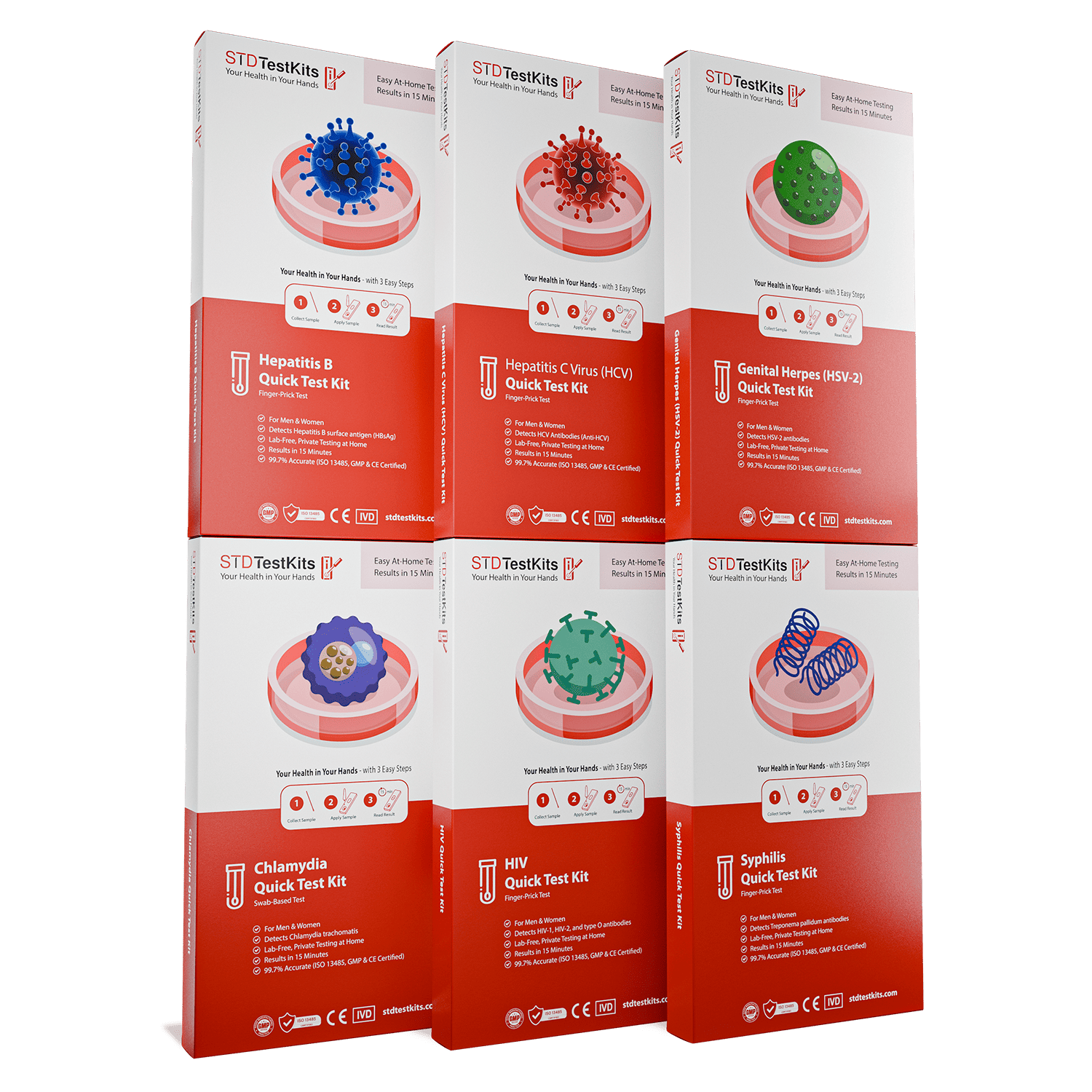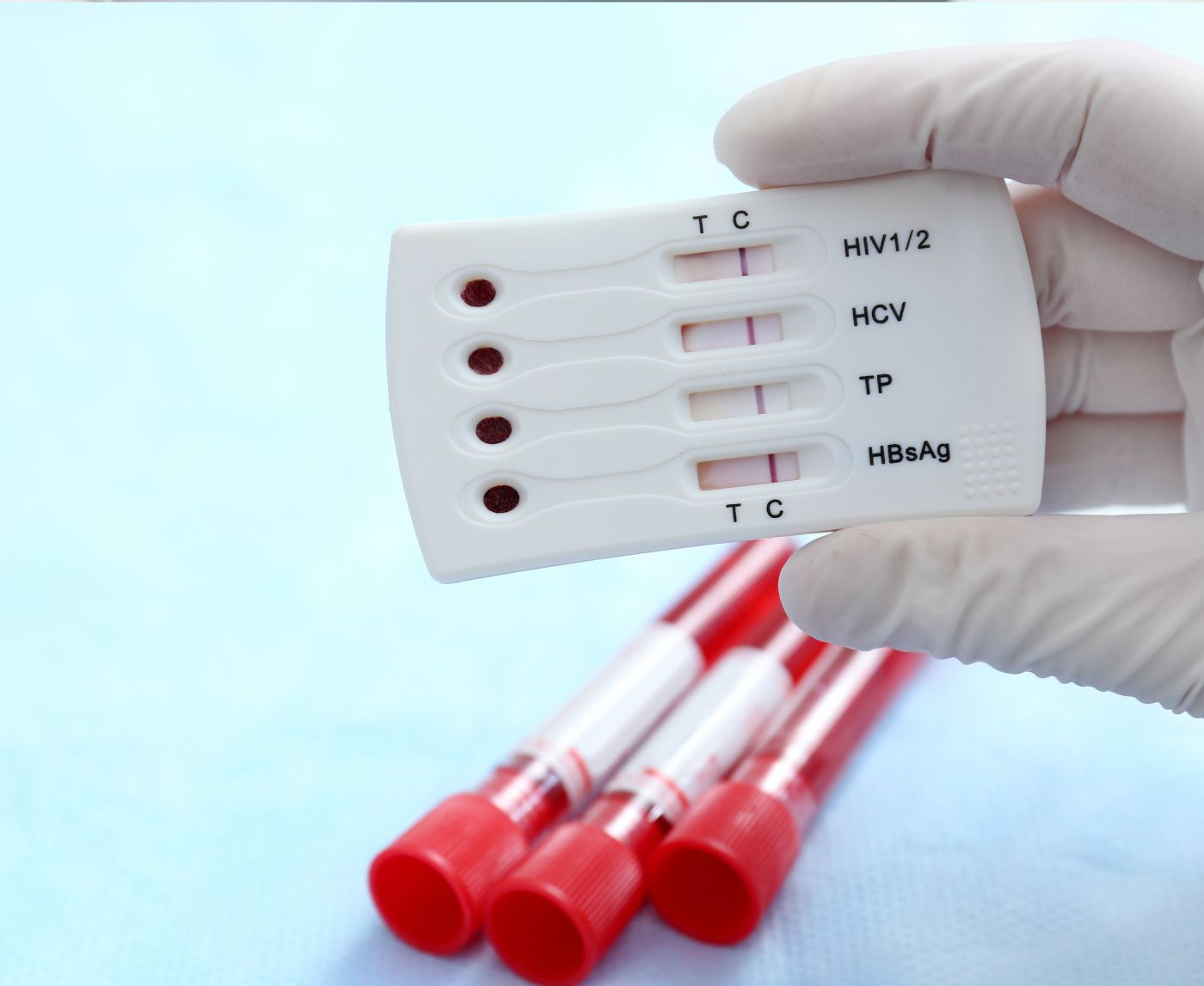Think You Have HIV? Why Testing Too Early Can Backfire
Quick Answer: Herpes swab tests can find active outbreaks, but they can't find silent infections. Blood tests can show if someone has been exposed in the past, but they often make people feel better when they are done too soon. The right test depends on when you take it, what your symptoms are, and what type of HSV you have (HSV-1 or HSV-2).
Why Most People Get Herpes Testing Wrong
Let’s be blunt: the system sets you up to fail. Clinics often don’t include herpes in standard STI panels unless you ask. And when they do test, they frequently order a blood test, regardless of symptoms or timing. This isn’t just a bureaucratic mess; it’s a recipe for false negatives, misdiagnosis, and people unknowingly passing HSV to partners.
To make it worse, symptoms aren’t always helpful. Many people with genital herpes never get visible blisters. Others confuse early symptoms with ingrown hairs, irritation from shaving, or even allergic reactions. Add in anxiety, shame, or a rushed appointment, and it’s no wonder people walk away with bad info.
“I asked my doctor to test me for everything, and I thought I was clear,” said one user in a Reddit thread on misdiagnosed HSV-2. “Turns out they never tested me for herpes because I didn’t have sores that day.” This is not uncommon. It’s institutional gaslighting, dressed up as protocol.

People are also reading: STDs in the Suburbs: The Hidden Epidemic in Your Neighborhood
Blood Test vs Swab: Here’s What They Actually Do
Let’s break it down with no fluff: swab tests and blood tests for herpes do two very different things. And using the wrong one at the wrong time will leave you confused, or worse, contagious and unaware.
Figure 1. Summary of herpes testing methods and when they’re most reliable.
A swab test looks for actual viral DNA. If you have an open sore, this is the most accurate way to confirm herpes. It must be done within 48–72 hours of the outbreak, after that, the virus may stop shedding and the test can return a false negative.
A blood test, specifically the IgG antibody test, doesn’t detect the virus. It checks if your body has developed antibodies, your immune system’s receipts. This can take weeks or even months to show up. Testing too early will almost guarantee a false negative. And that “HSV-1 positive” result? It could be from a cold sore you had when you were 8.
Timing Is Everything: The Herpes Window Period
People always want to know, “How soon can I test?” But here’s the brutal truth: fast isn’t always accurate. Herpes testing depends on something called the window period, the time between exposure and when a test can reliably detect the virus or antibodies. Get tested too soon, and you might walk away thinking you’re in the clear when you’re not.
Figure 2. Window periods for swab and blood tests and when to expect reliable results.
If you were exposed yesterday and test with a blood test today, the odds of catching anything are basically zero. It’s not that you’re clean, it’s that your immune system hasn’t reacted yet. This delay is why so many people test too early, get a negative result, then unknowingly pass the virus on.
Pro tip: If you see or feel something weird, get a swab. If nothing’s happening but you want to know your status, wait at least 12 weeks for an accurate blood test. Herpes doesn’t reward impatience with clarity.
“It Looked Like Razor Burn”: Real Stories, Real Testing Mistakes
Sofia, 28, first noticed a patch of tiny bumps after a weekend trip with a new partner.
“It didn’t hurt much, just looked like irritation. I thought it was from shaving too close.”
A week later, they were gone. She got a full STD panel at a local clinic.
“I was negative for everything, and they didn’t even mention herpes. I assumed I was fine.”
But three months later, she had a classic outbreak: painful blisters, swollen lymph nodes, low-grade fever. This time, a doctor did a swab. It came back positive for HSV-2. Her original test hadn’t failed, her clinic had.
Now flip the story. Marcus, 35, had no symptoms but a partner disclosed they’d tested positive for herpes after dating. “I freaked out, booked a test that day,” he said. The clinic offered him a swab, useless, since he had no lesions. The result? Negative, obviously. He thought he was in the clear.
Only later did he learn that a blood test would’ve been more appropriate in his case. He retested with an IgG panel 14 weeks after exposure. HSV-2 positive. No symptoms. But still contagious.

People are also reading: I Have Herpes, But My Partner Has No Symptoms; Now What?
At-Home Herpes Testing: Does It Even Work?
Short answer? Yes, but only if you know what you’re doing. And only if you’re not in the middle of an outbreak. Most at-home herpes tests are blood-based antibody kits. You prick your finger, mail the sample, and get results in a few days. These are great if you’re asymptomatic or if it’s been months since a potential exposure.
But they’re useless if you currently have a sore. Antibodies take time to form, so if you’re mid-outbreak and test early, you could get a false negative. Worse, most home test kits don’t explain this clearly, leaving people confused and falsely reassured.
Swab tests, by contrast, aren’t typically offered at home. They require precise collection from a lesion, often within 48 hours of symptom onset. Some clinics or telehealth services offer at-home swabs, but they’re rare, and honestly, tough to do right without training.
That’s why timing and test type matter more than the test brand. If you’re testing at home, make sure you:
- Wait at least 12 weeks after exposure for accurate antibody detection
- Understand that a negative doesn’t rule out everything, especially recent infections
- Use a reputable test provider with clear instructions and telehealth support
If you want discreet, fast results and haven’t had an outbreak, this combo test kit includes herpes along with other common STDs.
Common Myths That Keep People Misdiagnosed
Most people think herpes is always obvious. Painful. Unmistakable. That’s a lie. HSV-1 and HSV-2 can infect the mouth or genitals silently. In fact, CDC data shows that most people with herpes don’t know they have it.
Let’s debunk a few crowd favorites:
- “I don’t have sores, so I must not have herpes.” False. You can be contagious and never show symptoms.
- “My test was negative, so I’m clear.” Not if it was taken too early or was the wrong type.
- “I was tested for everything.” Herpes is often excluded from routine panels unless you specifically ask.
Also, a lot of clinicians avoid blood tests because interpreting them is tricky. A low-positive HSV-2 result (like 1.2 index value) can be a false positive. Confirmatory testing like a Western Blot or Biokit is rarely offered, and usually not covered by insurance.
Bottom line: Testing isn’t magic. It’s just information. And if you don’t understand what that information actually tells you, you’re at risk of misunderstanding your status entirely.
When to Retest (And When to Stop Guessing)
Here’s a sanity-saving truth: herpes tests aren’t one-and-done. Retesting is part of responsible care, especially if your first test was taken during the window period, or you had symptoms that didn’t get swabbed in time.
Most people benefit from retesting at the 12- to 16-week mark after a suspected exposure, even if they feel fine. Why? Because your immune system might need that long to build detectable antibodies. And if you were tested while your immune system was still figuring things out, your result might have been meaningless.
If you’ve ever sat in your car after getting a result, heart pounding, not knowing what it meant, know this: you’re not alone. And you’re not helpless. But you do need better info. And now you have it.
What If You Test Positive?
Let’s strip the shame out of this. A positive herpes result doesn’t mean you’re dirty, promiscuous, or doomed. It means you’re human, and now you know what you're working with. Roughly half a billion people have genital herpes worldwide. Most of them live full, healthy, love-filled lives.
First, confirm the result. If your swab came back positive, that’s pretty definitive. If your blood test showed a low-positive (especially under 3.5 index value), ask your provider about confirmatory testing, like the Western Blot or Biokit. They’re not always easy to access, but they can reduce the chance of a false positive.
Next, tell your partner(s), not because you owe anyone your full sexual history, but because informed consent matters. And because protecting them isn’t just about them, it’s about you feeling grounded in your decisions. You can do this without drama or oversharing. Keep it simple:
“Hey, I just found out I tested positive for HSV-2. It’s more common than people think. I want you to know so you can decide if you want to get tested too.”
There’s no legal script for this. Just honesty and boundaries. Some people will ghost. Some will thank you. Some might confess they’ve been living with it too. You are not a risk. You are a person who cares.
How to Navigate Privacy, Shipping, and Online Testing
For a condition so intimate, testing often feels anything but private. Clinics ask invasive questions. Insurance may deny coverage. Some providers won’t test unless you’re symptomatic. It’s a mess. And for people in rural areas, conservative communities, or transphobic health systems, it can feel like testing isn’t even an option.
This is where discreet, at-home options come in. The STD Test Kits site offers finger-prick test kits that ship in plain packaging. There’s no logo. No sexual health branding. Just a nondescript envelope that fits in a mailbox. Return shipping is pre-paid and results are usually available within 2–3 days of lab receipt.
It’s not a perfect system, home kits don’t offer swab options yet, but for blood-based screening, they’re damn good. If you need clarity without an interrogation, this is it.
Testing Positive and Dating Again: What They Don’t Tell You
Jen, 24, tested positive for HSV-2 after a summer fling. “I thought I’d never date again,” she said. “I cried in my car for an hour. But then I found Reddit support threads, started therapy, and eventually told a new partner. He was unfazed. Literally said, ‘That’s it?’”
This happens more than you’d think. Once the panic dies down, people realize that herpes is a skin condition with a PR problem. You don’t need to disclose to employers. You don’t have to tattoo it on your forehead. You don’t even have to bring it up until you’re ready to be intimate.
Suppressive therapy (like daily valacyclovir) reduces transmission by up to 50%. Condoms add even more protection. You’re not radioactive. You’re a person with boundaries and options.
Testing is step one. Living well is what comes after.
Let’s Get Practical: What to Do Right Now
If your brain is doing backflips trying to figure out whether to test, when to test, and how to interpret that one weird bump, here’s your short list:
- If you have symptoms: Get a swab test within 48 hours. Don’t delay.
- If you had a risky exposure but no symptoms: Wait 12–16 weeks, then get an IgG blood test.
- If you already tested but it was too early: Retest after the window period ends.
- If you're anxious or unsure: Try an at-home combo kit and follow up if needed.
You deserve answers that don’t come with judgment. And you don’t have to go through this alone. If it’s time to get answers.

People are also reading: Why So Many People Have Herpes and Don’t Even Know
FAQs
1. Can a blood test really tell if I have genital herpes?
Kind of, but not exactly. Blood tests show whether your body’s made antibodies to HSV-1 or HSV-2, they don’t tell you where the virus lives. So yeah, you might have HSV-1 from a cold sore you had at age 9, or HSV-2 and no idea where it came from. Only a swab from an actual sore gives you location-specific info.
2. How soon is too soon to test after exposure?
Yesterday is too soon. Today is probably still too soon. If you’re using a blood test, wait 12 to 16 weeks. That’s how long it can take for antibodies to show up. Swab tests work only during an active outbreak, and even then, you’ve got a 48-hour window before your body starts shutting the virus down.
3. Why didn’t my doctor test me for herpes?
Because herpes is the awkward cousin of the STD panel family. Most providers don’t include it in routine STI testing unless you ask, and sometimes even when you do ask, they talk you out of it. Why? Because interpreting results is messy, the test isn’t perfect, and no one wants to explain a false positive on a Friday afternoon.
4. Can I have herpes and still test negative?
Yep. Happens all the time. If you get tested too early, or use the wrong kind of test (like a swab with no sores, or a blood test right after exposure), you’re basically rolling the dice. That negative might mean “not infected” or “not detectable yet.” And the virus doesn’t care which one you believe.
5. Is there a herpes test I can do at home?
Yes, if you’re cool with finger-pricking yourself and mailing off a blood sample like a weird little science project. It’s private, it works, and it’s solid for HSV-1 and HSV-2 screening if you’re outside the window period. But if you’ve got a sore and want to swab it, you’ll need a clinic (or a very advanced telehealth service that trusts you with a Q-tip and zero supervision).
6. Are blood tests for herpes even accurate?
They can be, but they’re drama-prone. IgG tests are reliable after the window period, but low-positive results (like index values between 1.1 and 3.5) can be false. If you fall in that gray zone, a confirmatory test like the Western Blot can help, but it’s expensive, hard to get, and not exactly “fun weekend plans.”
7. What should I do if I have symptoms but my test was negative?
You probably tested too soon, or used the wrong method. If you had blisters but got a blood test? Wrong test. If your sore healed before the swab? Too late. You might need to wait, watch for recurrence, and try again. Annoying, but true.
8. Do condoms protect against herpes?
Mostly, but not completely. Condoms cover skin, not vibes. Herpes can be transmitted from areas condoms don’t touch, like the base of the penis or nearby skin. But don’t panic, condoms still lower the risk significantly. And adding daily antivirals (like valacyclovir) brings the risk way down.
9. Can I still have sex if I have herpes?
Unless you're planning to become a monk, yes. Having herpes doesn’t mean you have to shut down your love life. It means you’ll have more honest conversations, probably get better at boundaries, and join the millions of people who date, marry, hook up, and thrive with HSV. Spoiler: a lot of them don’t even have outbreaks anymore.
10. What’s the difference between HSV-1 and HSV-2?
HSV-1 is the “cold sore” virus. HSV-2 is the “genital” one. But that’s an oversimplification. Thanks to oral sex, both types now show up in both places. The main difference? HSV-2 tends to cause more frequent outbreaks and is more likely to recur. But neither is a moral failing. They’re just viruses that don’t care where you went to college.
You Deserve Answers, Not Assumptions
Herpes isn’t rare. Misinformation is. Whether you’re symptom-free but anxious, or facing your first outbreak, knowing which test to choose, and when, is the difference between peace of mind and months of confusion.
Don’t wait and wonder, get the clarity you deserve. This at-home combo test kit checks for the most common STDs discreetly and quickly.
How We Sourced This Article: We combined current guidance from leading medical organizations with peer-reviewed research and lived-experience reporting to make this guide practical, compassionate, and accurate. In total, around fifteen references informed the writing; below, we’ve highlighted some of the most relevant and reader-friendly sources.
Sources
1. World Health Organization – Herpes Simplex Virus
2. Planned Parenthood – Herpes 101
3. Screening for Genital Herpes – CDC
4. Herpes Testing – American Sexual Health Association
5. Herpes (HSV) Test – MedlinePlus
About the Author
Dr. F. David, MD is a board-certified infectious disease specialist who works to stop, diagnose, and treat STIs. He is dedicated to making his work available to more people, whether they live in cities or off the grid. He combines clinical accuracy with a straightforward, sex-positive approach.
Reviewed by: Taylor Min, NP-C | Last medically reviewed: October 2025
This article is for informational purposes and does not replace medical advice.






